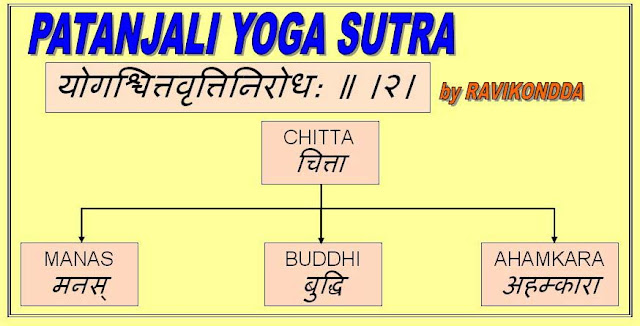Pathanjali Yoga sutra :-
The Hindu Scriptural
literature is so vast and comprehensive that there is no branch of knowledge
left uninvestigated by the great seers of this Country – India
What is Hinduism
:-

What is “VEDA” ?
The Sanskrit word “VEDA”
comes from the root “VID” to know. Veda is literally the book of knowledge –
knowledge of the changeless and Supreme reality.
The vast knowledge of the Veda was as a single source without any classification in the first part of the Dwapara Yugam (more than 6000 years ago). Later, Maharishi Veda Vyasa classified it into many divisions and subdivisions for the benefit of all to understand. He divided the Veda into 4, wrote Mahabharata, 18 Mahapuranas and Vedanta.
The vast knowledge of the Veda was as a single source without any classification in the first part of the Dwapara Yugam (more than 6000 years ago). Later, Maharishi Veda Vyasa classified it into many divisions and subdivisions for the benefit of all to understand. He divided the Veda into 4, wrote Mahabharata, 18 Mahapuranas and Vedanta.
I am
presenting the classification of the Knowledge gained and accumulated by our
great Rishis over a period of thousands of years in a series of slides.
Those who want to seriously know about our religion are requested to save these slides for further reference.
Those who want to seriously know about our religion are requested to save these slides for further reference.
You
will be surprised that all the knowledge in today’s world of Science &
Technology, Medicine, Architecture, Literature and all have their roots in one
of these classifications.
Smritis in
detail :-
Here I am expanding a part
of the full classification of knowledge (Vedas). That is the Smritis part
which contains knowledge about all aspects of material knowledge for
living. Whereas Srutis deal with spiritual aspects.
Pathanjali’s Yoga which we are going to deal with is a part
of Veda Upangas, which in turn is a part of Smritis and which in turn is a part
of the Vedas.
Continued...................................









